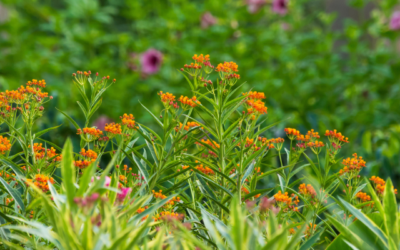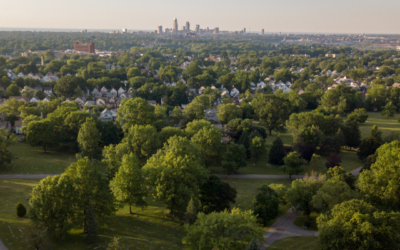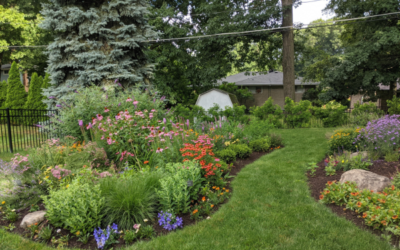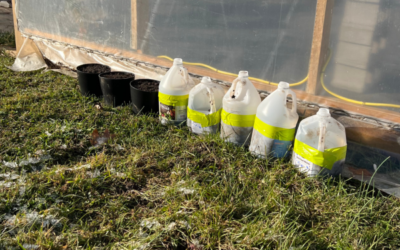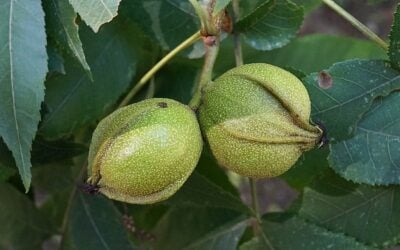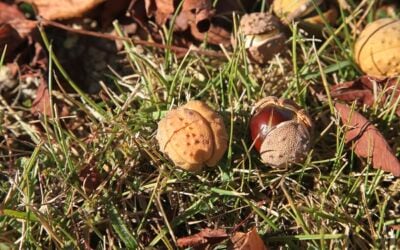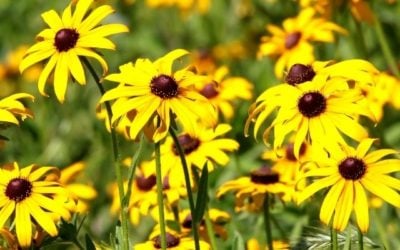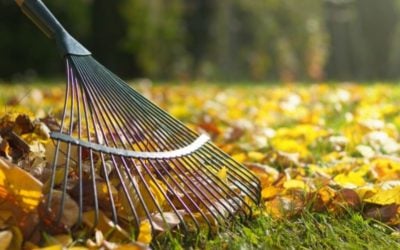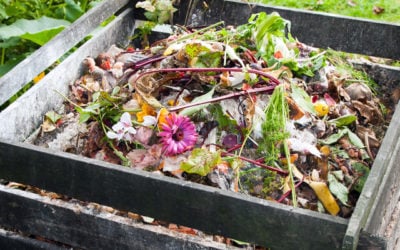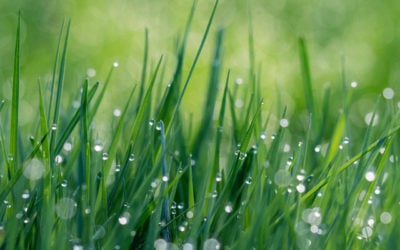Know Your Grass
GROWING HEALTHY TURF GRASS
Most common and popular grass types are not meant to live in the climate where they are found. Furthermore, lawns usually promote a monoculture and limit diversity of both plant and animal species. Promoting healthy turf growth, however, can make your lawn attractive and environmentally-friendly.
Choose a hearty native species
Locally appropriate grasses, such as turf-type tall fescue, require low maintenance, germinate quickly, and are able to survive Ohio’s droughts. If you have a larger lawn, consider dedicating a portion of it to a no-mow lawn, ground cover or gardens.
Set a threshold for the number of non-grasses that you are willing to accept. Commonly found in seed mixes before the introduction of broadleaf herbicides, Dutch (or white) clover benefits your lawn by fixing nitrogen in the soil, thrives in clay soil, and acts as a deterrent to common soil pests.Creating a Rain Garden
NATIVE GRASSES AND SEDGES
| Big Bluestem Andropogon gerardii Side-oats Gramagrass Bouteloua curtipendula Gray’s Sedge Carex grayi Palm Sedge Carex muskingumensis Purple Love Grass Eragrostis spectabilis |
Virginia Wild Rye Elymus virgatum Soft Rush Juncus effuses Golden Wood Millet Milium effusum Deer Tongue Grass Panicum clandestinum Wide Leaf Sedge Carex plantaginea |
Canada Wild Rye Elymus canadensis Switchgrass Panicum virgatum Little Bluestem Schizachyrium scoparius Indian Grass Sorgastrum nutans Prairie Cord-grass Spartina pectinata |
WATER APPROPRIATELY
Light, frequent watering can actually hurt grass. Over watering and/or frequent watering will stimulate excessive top-growth and increase the need for mowing. Lawns watered too frequently also tend to develop shallow roots, which may make them more susceptible to pests and heat-drought stress. Water deeply and infrequently. Your lawn only needs approximately 1 inch of water per week, factoring in both rain and irrigation.
Northeast Ohio usually receives enough rain during the summer to eliminate the need for watering. Watering should be done no more than once every five days and should saturate the soil to 6 to 8 inches. The best time to water is before 9 A.M., after which time evaporation begins to affect water absorption. If using a sprinkler system, test to see how long you’ll need to run it. Set a tuna can in the watering zone and see how long it takes to fill the one inch can.
Use rain water. Plants prefer rain water because of its neutral pH and the absence of salt, chlorine and fluoride. Rain barrels are an easy way to collect rain water from roofs and prevent runoff from rushing straight into municipal stormwater management systems. Many local watershed and environmental organizations host workshops on how to build your own rain barrels.
Re-seed to prevent invaders. Re-seeding your lawn in early fall is a good way to re-propagate bare spots and prevent weeds from taking over. Early fall is a good time for this because the ground is still moist and warm, and there is enough time for the grass to develop before the winter weather.
Grass grows best in 4-6” of topsoil that is well-drained and filled with organic matter. You can add organic matter with compost.
More Articles for a Healthy Yard and Home
How To Fight Stream Pollution Through Effective Stormwater Management
In this guide, we’ll explore and address how pollutant loading in streams is crucial for the well-being of both watersheds and communities.
Roots of Sustainability: Understanding the Importance of Trees in Urban Living
A healthy urban tree canopy has a profound and positive impact on community quality of life in various ways. Recognizing the value of urban trees and investing in their preservation can contribute to sustainable, resilient, and vibrant urban living.
Shrink Your Lawn: A Guide to Growing More Native Plants
In this guide, we’ll explore the importance of reducing your lawn’s size and explain the many benefits it brings, both for your wallet and the environment.
Cold-Weather Cultivation: 8 Steps to Winter Sowing and Seed Stratification
It is important to determine when native seedlings are ready for harvest. Not sure how to? Check out our guide to harvesting native seedlings.
How to Know When Native Seedlings are Ready to be Harvested
It is important to determine when native seedlings are ready for harvest. Not sure how to? Check out our guide to harvesting native seedlings.
Harvesting Guide for Native Seedlings and Plants
Stearns Native Nursery is always in need of native trees and seedlings. To get your native plants to the Stearns Nursery, follow this harvesting guide.
How to Add Native Plants to Your Garden
Many of us have chosen to cultivate species and landscapes that are not naturally-occurring in our region. It’s wasteful, expensive and detrimental to wildlife who encounter reduced availability of the native species upon which they feed.
Wildlife-Friendly Fall Yard Cleanup
Before any landscape program begins, assess the current conditions of your home landscape. This assessment will help you to identify and prioritize future projects and allow you to appreciate all the positive changes you’ve made.
Composting 101
Before any landscape program begins, assess the current conditions of your home landscape. This assessment will help you to identify and prioritize future projects and allow you to appreciate all the positive changes you’ve made.
Turf Grass Care
Before any landscape program begins, assess the current conditions of your home landscape. This assessment will help you to identify and prioritize future projects and allow you to appreciate all the positive changes you’ve made.

